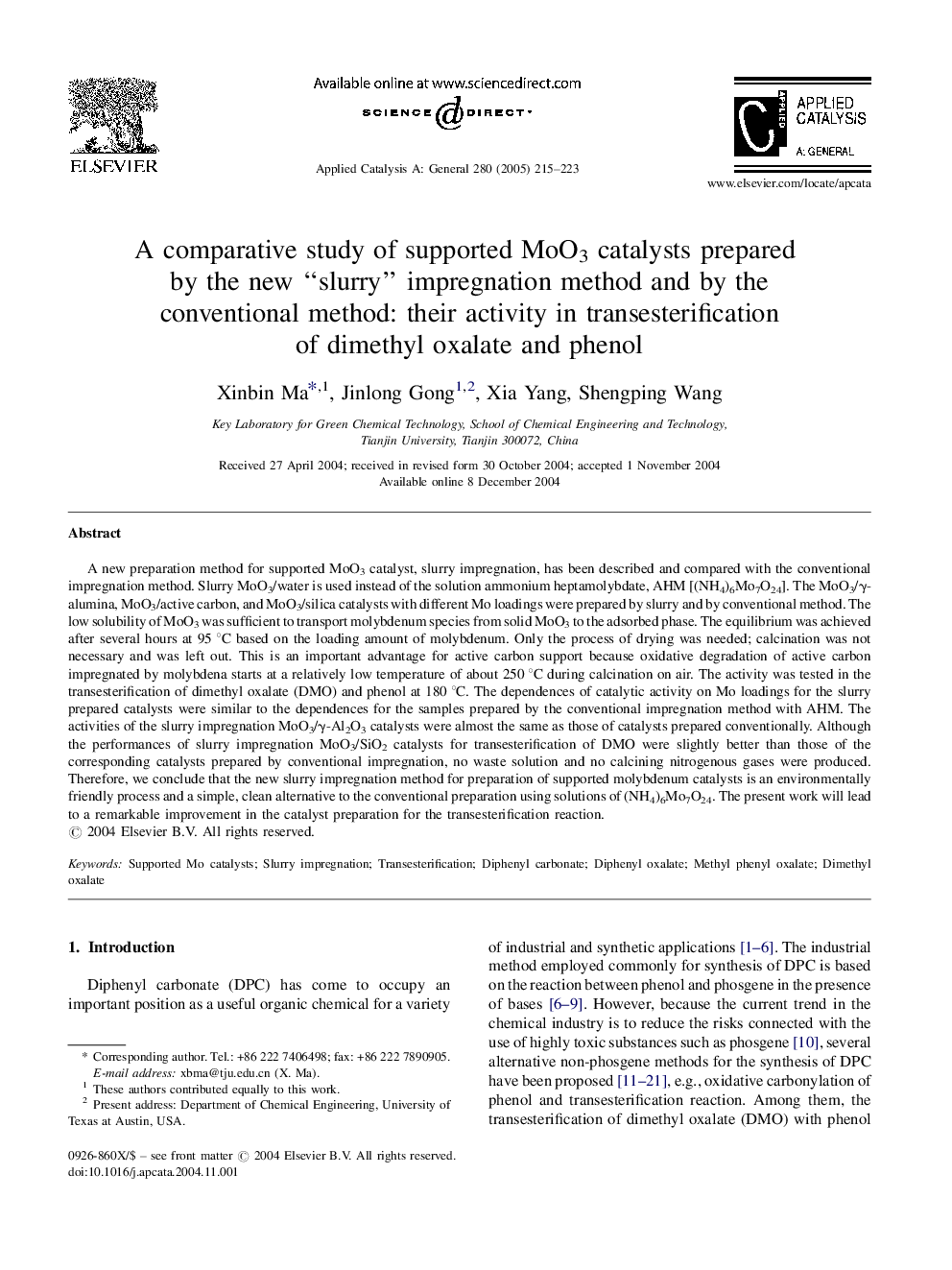| Article ID | Journal | Published Year | Pages | File Type |
|---|---|---|---|---|
| 9608122 | Applied Catalysis A: General | 2005 | 9 Pages |
Abstract
A new preparation method for supported MoO3 catalyst, slurry impregnation, has been described and compared with the conventional impregnation method. Slurry MoO3/water is used instead of the solution ammonium heptamolybdate, AHM [(NH4)6Mo7O24]. The MoO3/γ-alumina, MoO3/active carbon, and MoO3/silica catalysts with different Mo loadings were prepared by slurry and by conventional method. The low solubility of MoO3 was sufficient to transport molybdenum species from solid MoO3 to the adsorbed phase. The equilibrium was achieved after several hours at 95 °C based on the loading amount of molybdenum. Only the process of drying was needed; calcination was not necessary and was left out. This is an important advantage for active carbon support because oxidative degradation of active carbon impregnated by molybdena starts at a relatively low temperature of about 250 °C during calcination on air. The activity was tested in the transesterification of dimethyl oxalate (DMO) and phenol at 180 °C. The dependences of catalytic activity on Mo loadings for the slurry prepared catalysts were similar to the dependences for the samples prepared by the conventional impregnation method with AHM. The activities of the slurry impregnation MoO3/γ-Al2O3 catalysts were almost the same as those of catalysts prepared conventionally. Although the performances of slurry impregnation MoO3/SiO2 catalysts for transesterification of DMO were slightly better than those of the corresponding catalysts prepared by conventional impregnation, no waste solution and no calcining nitrogenous gases were produced. Therefore, we conclude that the new slurry impregnation method for preparation of supported molybdenum catalysts is an environmentally friendly process and a simple, clean alternative to the conventional preparation using solutions of (NH4)6Mo7O24. The present work will lead to a remarkable improvement in the catalyst preparation for the transesterification reaction.
Keywords
Related Topics
Physical Sciences and Engineering
Chemical Engineering
Catalysis
Authors
Xinbin Ma, Jinlong Gong, Xia Yang, Shengping Wang,
